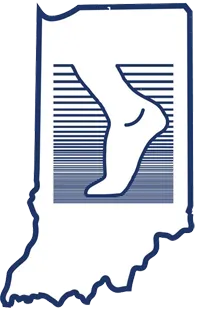By now you have committed to your New Year's Resolution Dr. House had blogged about earlier this year and if you were not exercising regularly and have started a new walking or running routine you may be finding your feet are hurting despite getting a new pair of shoes. Dr. Glynn has already blogged about how to pick those running shoes and you have followed her recommendations so the shoe is not an issue, but despite that the outside of your foot and ankle is painful. You also read Dr. Abdo's blog on high ankle sprains and you have not had any direct trauma so it is not that and you read my earlier blog about plantar fasciitis and you may or may not have associated pain on the bottom of your foot. So what is going on?
There are 3 tendons that are on the side and top of your foot and they are responsible for bringing your foot up to help clear the ground and if you have resumed an exercise program or upped your activity they may not like all the extra stress. These 3 tendons are the Peroneal tendons. So what can be done? First it is good to know for sure that that is the problem and physical exam is important. We may check x-rays to look for a fracture and ultrasound to evaluate the tendon for inflammation or tear. Sometimes MRI is also necessary.
Once it is confirmed that you have PERONEAL TENDONITIS, what can you do about it? For any acute or new pain or trauma RICE is important. R is for Rest and that may be from the activity or with immobilization with an ankle brace or boot. I is for Ice. C is for Compression and E is for Elevate. This can help you get through the short term but you need to look at the biomechanics and getting into a custom molded orthotic to give your foot the biomechanical advantage and is important for long term treatment.
Now you may have done all this and still have pain. We do due surgery to clean up the tendon if there is a split and also stimulate the tendon with either topaz, radio colblation therapy, or with PRP, platelet rick protoplasm to help the body heal itself.
You may have to go to physical therapy before or after surgery.
It is important to continue with your custom molded orthotics from Podiatry Associates of IN to help keep your feet healthy, so you may reach your fitness goals.
